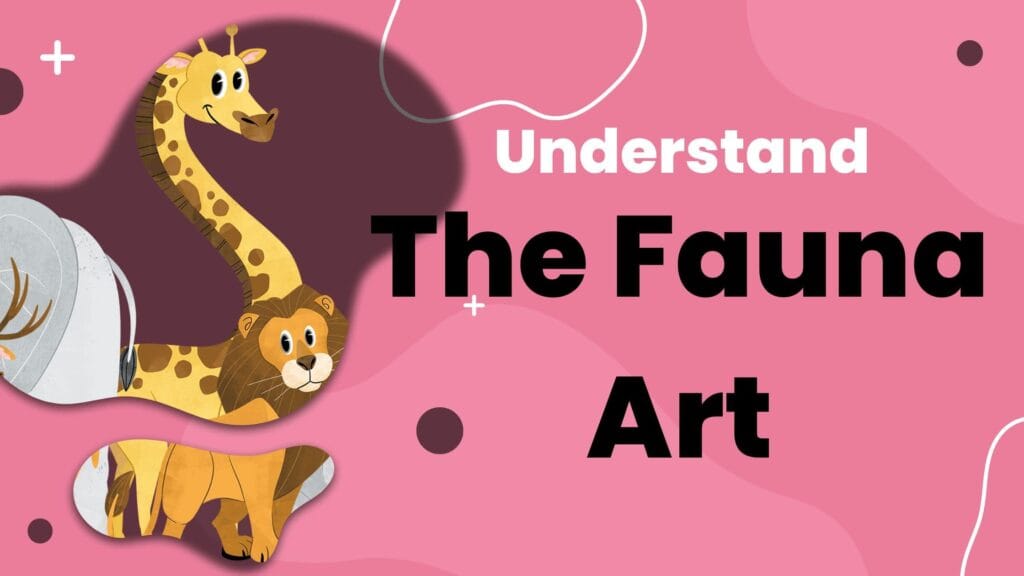In the vast realm of artistic expression, one niche stands out for its profound connection with nature–fauna art. Fauna artists capture the essence of the natural world, bringing to life the beauty and diversity of wildlife art through their creations. This article delves into the captivating world of fauna artists, exploring their techniques, inspirations, and contributions to art and conservation.
Understanding Fauna Art:
Fauna art encompasses various mediums, including painting, sculpture, photography, and digital art, all centered around depicting animals and their habitats. These artists deeply revere wildlife, often studying their subjects to accurately portray their form, behavior, and environment
Techniques and Styles:
Fauna artists employ various techniques and styles to convey their vision. Some favor hyperrealism, meticulously rendering every detail of their subjects with precision and accuracy. Others opt for abstraction, capturing the essence of an animal’s movement or spirit through bold brushstrokes and expressive colors. Additionally, mixed-media approaches allow artists to experiment with texture and dimension, adding another layer of depth to their work.
Inspiration and Motivation:
The natural world serves as an endless wellspring of inspiration for fauna artists. Many draw inspiration from personal encounters with wildlife, reflecting on the profound impact these experiences have on their artistic practice. Others are motivated by a desire to raise awareness about conservation issues, using their art as a tool for advocacy and education.
Celebrated Fauna Artists:
Numerous talented artists have made significant contributions to the genre of fauna art. One such luminary is Robert Bateman, renowned for his stunning portrayals of wildlife in their natural habitats. His detailed paintings capture the intricate beauty of animals, earning him widespread acclaim and recognition.
Another notable figure is Charley Harper, celebrated for his minimalist yet vibrant depictions of birds and other creatures. Harper’s distinctive style simplifies complex forms into geometric shapes and patterns, resulting in captivating compositions that convey the essence of each species.
The Intersection of Art and Conservation:
Fauna art serves as a celebration of nature’s beauty and plays a vital role in conservation efforts. Through their work, artists raise awareness about endangered species, habitat loss, and other pressing environmental issues, inspiring viewers to take action to protect our planet’s biodiversity.
Many fauna artists also collaborate with conservation organizations, donating some proceeds to support wildlife conservation initiatives. By leveraging their artistic talents for a more significant cause, these artists demonstrate the power of creativity in effecting positive change.
In fauna art, artists often employ techniques and mediums to convey their unique perspectives on wildlife. For instance, some artists specialize in intricate graphite drawings, delicately capturing the textures of fur, feathers, or scales with meticulous detail. Others venture into sculpture, utilizing various materials such as clay, wood, or metal to sculpt lifelike representations of animals in their natural habitats.
Moreover, advancements in digital art have opened up exciting new possibilities for fauna artists. Digital painting software allows unprecedented flexibility and experimentation, enabling artists to blend realism with imaginative elements seamlessly. Additionally, photomanipulation enables artists to combine photography with digital painting, creating captivating compositions that blur the line between reality and fantasy.
Innovative Approaches to Fauna Art:
As fauna art continues to evolve, artists are increasingly exploring innovative approaches to push the boundaries of traditional representation. For example, some artists incorporate unconventional materials into their work, such as recycled plastics or found objects, to draw attention to environmental issues such as pollution and habitat degradation.
Furthermore, interdisciplinary collaborations between artists and scientists have become increasingly common, resulting in projects that merge art with scientific research. These collaborations not only yield visually stunning artworks but also contribute valuable insights into wildlife biology, ecology, and conservation.
Social and Cultural Significance of Fauna Art:
Fauna art has long been significant in human culture, providing inspiration, symbolism, and spiritual connection. Throughout history, animals have been depicted in art across various cultures and civilizations, often representing concepts such as strength, wisdom, or the divine.
In contemporary society, fauna art plays a vital role in shaping our understanding of the natural world and our relationship with it. Art exhibitions, galleries, and museums dedicated to wildlife art provide platforms for artists to showcase their work and engage with audiences on conservation issues.
Moreover, the democratization of art through digital platforms and social media has enabled fauna artists to reach global audiences and amplify their messages of environmental stewardship. Through online platforms, artists can connect with like-minded individuals, share their work, and inspire collective action towards protecting biodiversity.
Looking to the Future:
As we confront unprecedented challenges such as climate change, habitat destruction, and species extinction, the role of fauna art in fostering empathy, awareness, and action has never been more critical. By harnessing the power of creativity and imagination, fauna artists have the potential to inspire transformative change and contribute to the conservation of our planet’s precious wildlife for generations to come.
Fauna art is a testament to humanity’s fascination with the natural world. Through their creative endeavors, fauna artists enrich our lives, inviting us to marvel at the splendor of wildlife and contemplate our place within the ecosystem. As we immerse ourselves in their creations, we gain a deeper appreciation for all living beings’ intricate beauty and interconnectedness.
